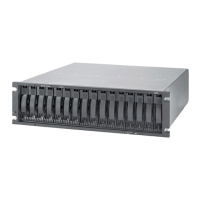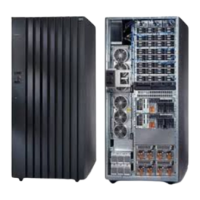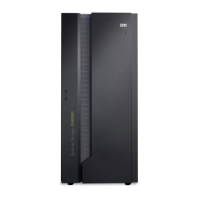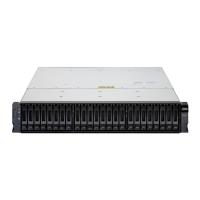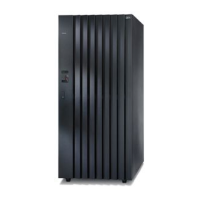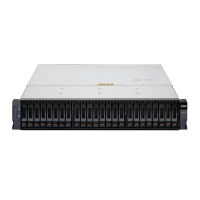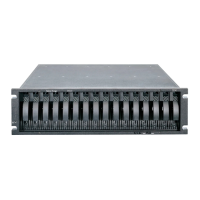Handling fiber-optic cables
Before you use fiber-optic cables, read the following precautions.
Attention: To avoid damage to the fiber-optic cables, follow these guidelines:
v Do not route the cable along a folding cable-management arm.
v When attaching to a device on slide rails, leave enough slack in the cable so that
it does not bend to a radius of less than 38 mm (1.5 in.) when extended or
become pinched when retracted.
v Route the cable away from places where it can be snagged by other devices in
the rack cabinet.
v Do not overtighten the cable straps or bend the cables to a radius of less than 38
mm (1.5 in.).
v Do not put excess weight on the cable at the connection point. Be sure that the
cable is well supported.
Installing SFP modules
The DS4800 host and drive channel ports require SFP modules. SFP modules are
used to convert electrical signals to optical signals that are required for fibre
channel transmission to and from RAID controllers. The DS4800 supports two types
of SFP modules: one with a plastic latch and one with a wire latch. After you install
the SFP modules, you use fiber-optic cables to connect the DS4800 to other fibre
channel devices.
Before you install SFP modules and fiber-optic cables, read the following
information:
v Use only short-wave/multimode SFPs in DS4800 host or drive ports. In DS4800
configurations, you may use long-wave SFPs only in fibre channel switches that
connect DS4800s over long distances.
v The SFP module housing has an integral guide key designed to prevent you from
inserting the SFP module improperly.
v Use minimal pressure when you insert the SFP module into a port. Forcing the
SFP module into a port could cause damage to the SFP module or the port.
v You can insert or remove the SFP module while the port is powered on.
v The operational loop performance is not affected when you install or remove an
SFP module.
v You must insert the SFP module into a port before you connect the fiber-optic
cable.
v You must remove the fiber-optic cable from the SFP module before you remove
the SFP module from the fibre channel port. See “Removing SFP modules” on
page 50 for more information.
v The speed of the SFP module determines the maximum operating speed of the
fibre channel port in which the SFP is installed. For example, a 2 Gbps SFP that
is plugged into a 4 Gbps-capable port will limit the speed of that port to a
maximum of 2 Gbps.
v The only label that identifies whether an SFP module can be operated at 2 Gbps
only, or at both 2 Gbps and 4 Gbps, is the SFP part number that is printed on the
manufacturing label attached to the SFP. Verify that you use SFPs with the
correct speed requirements in your environment.
48 IBM System Storage DS4800 Storage Subsystem: Installation, User’s, and Maintenance Guide
